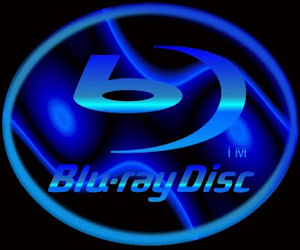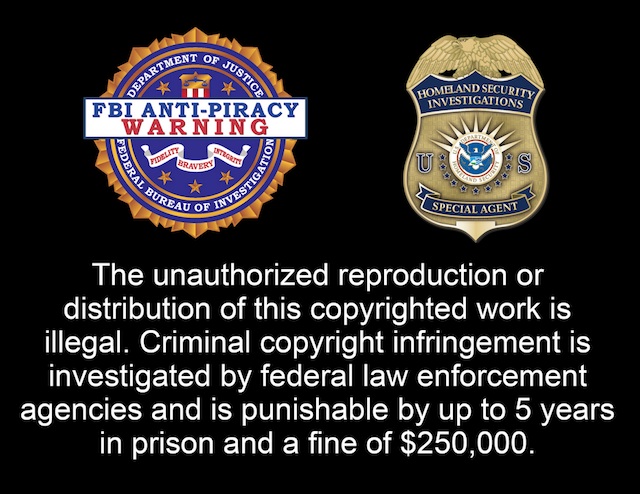Believe it or not, the audio specs of the various content platforms such as Roku, Chromecast, Fire, Apple TV, Amazon Prime, and Netflix are in many cases confusing, misleading, or simply untrue. I know those are strong words to use but there is often no truth to the specs you read and the claims they make, it’s merely specsmanship to make a sale. Unlike the FTC rating for power amps, there is no regulation or regulator on the beat to call them out, it’s up to us as consumers to figure it out on our own. I’ve written today’s post to help everybody learn how this works because many recent audiophiles think they can use their notebook computers to store and watch Blu-ray Hi Res Audio and Hi Def video with no less performance than on an actual Blu-ray player. That is simply impossible and this post will help explain why.
One way to learn what all the specs mean is to look at the chart below of specifications for the Primary Audio Streams on a Blu-ray disc. Hi Res Audio is defined as 24 bit at either 96K or 192K sample rate, nothing lower. Everything lower is known as “lossy”, meaning the dynamic range is compressed dramatically.
| Specification of Blu-ray Primary Audio Streams: | ||||||
| LPCM (Lossless) | Dolby Digital | Dolby Digital Plus | Dolby TrueHD (Lossless) | DTS Digital Surround | DTS-HD Master Audio (Lossless) | |
| SMax. Bitrate | 27.648 Mbit/s | 640 kbit/s | 4.736 Mbit/s | 18.64 Mbit/s | 1.524 Mbit/s | 24.5 Mbit/s |
| Max. Channel | 8 (48 kHz, 96 kHz), 6 (192 kHz) | 5.1 | 7.1 | 8 (48 kHz, 96 kHz), 6 (192 kHz) | 5.1 | 8 (48 kHz, 96 kHz), 6 (192 kHz) |
| Bits/sample | 16, 20, 24 | 16, 24 | 16, 24 | 16, 24 | 16, 20, 24 | 16, 24 |
| Sample frequency | 48 kHz, 96 kHz, 192 kHz | 48 kHz | 48 kHz | 48 kHz, 96 kHz, 192 kHz | 48 kHz | 48 kHz, 96 kHz, 192 kHz |
Notably it’s important to understand that PCM is the default standard for Blu-ray audio but it does not have the highest bitrate, it’s the equivalent of Dolby Digital Plus, several orders of magnitude below whats considered Hi Res Audio today, but still as good as CD. If you play a Blu-ray disc without first setting the audio output of the player up for Bitstream output via HDMI and choose one of the lossless versions of the soundtrack from the disc’s audio set-up menu, you will not be hearing the highest resolution content. For comparison’s sake, lets look at regular TV first.
Standard definition broadcasts over cable, satellite, or the internet are limited to first generation Dolby Digital with the lowest bit rate and highest compression, know in the trade as “lossy”. For an extra fee you can buy High Definition broadcasts via HD cable, fiber, or satellite which improve the performance up to Dolby Digital EX, adding a single rear center speaker for up to 6.1 channel performance with less compression, up to DVD-A quality. Blu-ray discs offer you a choice of the default to PCM/Dolby Digital Plus which adds a second additional rear center speaker for up to 7.1 channels, but the bit rate is still low compared to either Dolby TrueHD at 18.64 Mbps, DTS-HD Master Audio at 24.5 Mbps, or LPCM at 27.64 Mbps, the best of the uncompressed, lossless audio content on a Blu-ray disc.
To access the highest resolution content, you must use a Blu-ray player with the disc in the drawer, connected to a downstream device with HDMI v1.3 or  higher, authenticated by HDCP’s two-way handshake for a secure, copy-proof connection. There is no other way to access this high resolution content; it cant be downloaded, copied, stored, or recorded, that would be illegal. DRM (Digital Rights Management) is implemented on the disc, constraining the output unless the authentication process is complete. If not, the disc outputs a down-rezzed version of the audio content to one of the earlier lossy codecs, video back to 576p. HDMI is not fully implemented for the highest resolution from a computer, the studios and record labels have been fighting to prevent that from happening for 40 years and as the copyright holders they have the ability to constrain any connection to lower the resolution so its not possible to digitally record a one to one copy of the original master recording in hi res audio on a computer. Without a licensed Blu-ray player, disc in the drawer, and point to point connection via HDMI authenticated by HDCP, the highest resolution audio and video will not be accessible.
higher, authenticated by HDCP’s two-way handshake for a secure, copy-proof connection. There is no other way to access this high resolution content; it cant be downloaded, copied, stored, or recorded, that would be illegal. DRM (Digital Rights Management) is implemented on the disc, constraining the output unless the authentication process is complete. If not, the disc outputs a down-rezzed version of the audio content to one of the earlier lossy codecs, video back to 576p. HDMI is not fully implemented for the highest resolution from a computer, the studios and record labels have been fighting to prevent that from happening for 40 years and as the copyright holders they have the ability to constrain any connection to lower the resolution so its not possible to digitally record a one to one copy of the original master recording in hi res audio on a computer. Without a licensed Blu-ray player, disc in the drawer, and point to point connection via HDMI authenticated by HDCP, the highest resolution audio and video will not be accessible.
The storage capacity of a Blu-ray disc is 50 gigabytes, more than enough space to store the native 1080p uncompressed video content, 225% higher resolution than 720p/1080i. Directors could put the whole original uncompressed LPCM soundtrack on the disc but the file is so big, it takes up a lot of space they like to use for other video features like how they made the movie and interviews with the artists. Dolby Labs and DTS created lossless file compression algorithms that allow the original LPCM soundtrack to be compressed on the disc to save space but playback at a one to one bitrate, identical to the original master recording for the first time in history. I call it the holy grail of high fidelity because we have been on a quest to achieve this level of playback since the 1970s and now that its finally available, I think its important that people know we have finally reached the promised land.
When you choose either the Dolby TrueHD or DTS-HD Master Audio soundtrack on the Blu-ray disc audio set up page, the player automatically converts them both back to the original uncompressed LPCM 24/96-192K soundtrack for the trip downstream to the AVR, PrePro, or in the case of Essence to either the HDACC or Evolve DACs.. LPCM is the universal language of the highest resolution Blu-ray digital transfers, no further Dolby or DTS post processing is required at the playback end, as long as you have an LPCM decoder, that’s all you really need unless you like the overly equalized output of the HD Master or TrueHD processing, which on some movies can sound more dramatic but never sounds good on music. If you want your content to playback with neutrality, stick with LPCM.
 Except in very few cases, I can watch a movie once and never feel the need to watch it again. However when I hear music I love, music that fills me with emotion and makes me feel connected to my humanity, I want to hear it again and again, I never tire of great music. It’s with this in mind that I recommend the Blu-ray format to my friends and audiophiles. Watching and hearing the artists make their music is a sublime sensory experience that listening alone cannot convey. Blu-ray concerts put us on stage with the artists, close up and personal, to form an emotional intimacy that simply cant be duplicated even at a live performance. In that context I think Blu-ray concerts brings us closer to the music, creating a new art-form that transcends all previous forms of listening to music at home.
Except in very few cases, I can watch a movie once and never feel the need to watch it again. However when I hear music I love, music that fills me with emotion and makes me feel connected to my humanity, I want to hear it again and again, I never tire of great music. It’s with this in mind that I recommend the Blu-ray format to my friends and audiophiles. Watching and hearing the artists make their music is a sublime sensory experience that listening alone cannot convey. Blu-ray concerts put us on stage with the artists, close up and personal, to form an emotional intimacy that simply cant be duplicated even at a live performance. In that context I think Blu-ray concerts brings us closer to the music, creating a new art-form that transcends all previous forms of listening to music at home.
Update: For those of you who think because you own the Blu-ray disc you can rip a copy of it to your computer, a new warning has been added to the opening sequence of all DVDs and Blu-ray discs:
It’s followed by this warning regarding piracy:



